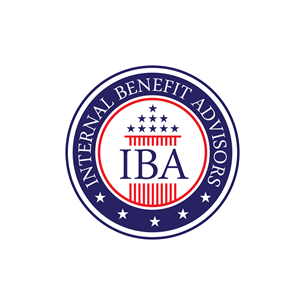- August 26, 2019
- Posted by: karren DiLevi
- Category: Market Trends


The Risk for a Recession is Rising | The stock market currently has elevated volatility as the trade dispute between the United States and China continues to escalate with new tariffs. The S&P 500 Index, tracked by the C Fund, is mildly down from all-time highs it set last month. The Dow Jones U.S. Completion Total Stock Market Index is still considerably below its high from a year ago in 2018.
Chart Source: Google Finance
Recession or No?
The media is increasingly reporting that the possibility for a recession within the next 12-18 months is growing. A lot of people are confused by this, because the unemployment rate is low, and other indicators seem to be doing well. There are a lot of conflicting signals to keep track of.
A key thing to focus on for understanding the recession discussion is the year-over-year rate of change of various economic indicators, rather than the absolute level of those indicators.
Recessions are contractions from a high point, so the rate of change of an indicator is far more important than the absolute level of an indicator. In addition, focusing on rate of change gives you some advance warning if economic growth is accelerating or decelerating before an actual contraction (negative rate of change) occurs.
For example, total annual construction spending in the United States seems great, at record highs:
Chart Source: St. Louis Fed (recessions shaded in gray)
However, the year-over-year percent rate of change of construction spending tells a very different story:
Chart Source: St. Louis Fed (recessions shaded in gray)
This second chart shows that construction spending is contracting for the first time in eight years. If this doesn’t turn back up soon, 2019 will have lower construction spending than 2018.
The manufacturing PMI also dipped into a mild contraction (below 50). In August for the first time since the previous recession. This indicator is particularly good. Because while most indicators are not reported until a month or a quarter after the fact. This one is almost real-time:
Chart Source: Trading Economics (contraction is under 50)
Many other key indicators are showing that the economy is slowing as well. Below is a color-coded heatmap that I put together of several year-over-year economic indicators from government sources. Including GDP growth, industrial production, retail spending, construction spending, capital goods orders, exports, imports, payrolls, the yield curve, and the consumer price index. Starting from the bottom and going up. It shows the year-over-year growth rate of the U.S. economy. These several key economic indicators over the past five years:
These data only come out monthly or quarterly. So we are looking back into June and July for the most recent numbers. Things are starting to flash yellow and orange.
During this business cycle, we already had economic slowdowns in 2012 and 2016. Which are related to various global issues such as the European sovereign debt crisis (2012). And the Chinese economic slowdown (2016). This chart shows quite a bit of red around the 2016 time period. But it wasn’t enough to drag the overall U.S. economy into a recession during that time period. Those indicators eventually turned back up into accelerating growth as we entered 2017. And started to decelerate again in 2018 and 2019.
Consumer spending makes up the majority of the U.S. economy. The construction and manufacturing sectors are on the brink of contraction at the moment. But overall employment levels and consumer spending are still growing. Employment and consumer spending tend to be lagging indicators. And more resilient to minor slowdowns than some of the more cyclical portions of the economy.
This last chart, for example, shows the year-over-year percentage growth in the U.S. population (red) and employed people (blue):
Chart Source: St. Louis Fed (recessions shaded in gray)
Although there have been some negative revisions this month and it’s starting to decelerate, the number of employed people is still growing above the baseline population growth.
As the media debates back and forth about whether we are entering a recession or not, the best we can do is simply monitor the rate of change of various indicators and see whether they are growing or contracting. As of mid-2019, many of the more cyclical ones are decelerating or even contracting, while the consumer segment is still going strong.
Whether we enter a recession within the next 12-18 months or not, it’s true that we are ten years into the longest period without a recession in United States history. We’ve had a considerable amount of time to build up personal financial reserves during a period of growth. It’s also true that the stock market tends to peak several months before the recession officially begins, and the official start of a recession is only declared in hindsight.
As I often say, it’s a good time to check that your TSP portfolio is appropriately diversified for your age and risk tolerance and that you have a strong personal finance situation including plenty of savings and a healthy difference between your income and your expenses. At best, we won’t enter a recession, some of these cyclical indicators will move back up into another growth cycle, and your finances will be in top shape. At worst, we will enter recession and you’ll prepare for it.
To see the full article published in Fedweek magazine and written by Lyn Alden, click here.

